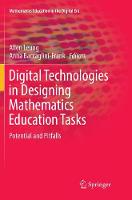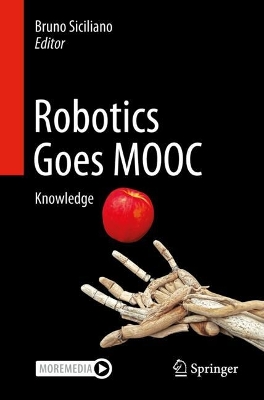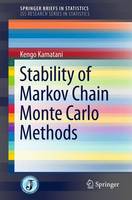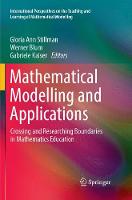Digital Technologies in Designing Mathematics Education Tasks
 -15%
portes grátis
-15%
portes grátis
Digital Technologies in Designing Mathematics Education Tasks
Potential and Pitfalls
Baccaglini-Frank, Anna; Leung, Allen
Springer International Publishing AG
06/2018
352
Mole
Inglês
9783319828206
15 a 20 dias
5621
Descrição não disponível.
Introduction by Allen Leung and Anna Baccaglini-Frank.- Section One.- Chapter 1 How the software used affects task design: Kate Mackrell and Christian Bokhove.- Chapter 2 The historical development of Digital Mathematics Environment: Peter Boon and Paul Drijvers .- Section Two.- Chapter 3 Techno-pedagogic task design in mathematics: Allen Leung.- Chapter 4 How the software design can affect students' mathematical productions: Samuele Antonini, Anna Baccaglini-Frank, Allen Leung, Maria Alessandra Mariotti.- Chapter 5 Using variation and feedback in tasks to increase learning: Christian Bokhove.- Section Three.- Chapter 6 Design digital tasks: Interactive Diagrams as resource and constraint: Michal Yerushalmy & Elena Naftaliev.- Chapter 7 E-books and Lesson Study: a teaching experiment on intercultural dialogue: Masami Isoda, Maria G. Bartolini Bussi, Alessandro Ramploud.- Chapter 8: What can you infer from this example? Applications of online, rich-media tasks for enhancing pre-service teachers' knowledge of the roles of examples in proving: Orly Buchbinder, Iris Zodik and Gila Ron.- Section Four.- Chapter 9 Issues emerging from the experiences of designing microworlds for young children: Anna Baccaglini-Frank.- Chapter 10: Designing tasks for the social and tangible mathematics in TouchCounts : Nathalie Sinclair.- Chapter 11 Designing digital mathematics learning scenarios for a more inclusive school mathematics:Lulu Healy and Solange Hassan Ahmad Ali Fernandes.- Chapter 12 Designing innovative learning activities to face up to difficulties in algebra of dyscalculia students: how exploit the functionality of AlNuSet: Elisabetta Robotti.- Section Five.- Chapter 13 Role and potential of using an interactive whiteboard and the relationship with teachers' practices: Floriane Wozniak.- Chapter 14 Designing assessment tasks in a dynamic geometry environment: Nathalie Sinclair and Marta Venturini .- Chapter 15 Designing tasks to promote discoursein math classroom: Janete Bolite Frant, Andreia Maciel Barbosa, Wellerson Quintaneiro.- Chapter 16 Designing for mathematical applications and modelling tasks in technology rich environments: Vince Geiger.- Section Six.- Chapter 17 Tensions in the design of mathematical technological environments: Tools and Tasks: Alison Clark-Wilson.- Chapter 18 The Learning by Design paradigm for Mathematics Teaching: Eugenia Koleza, Eugenia Arvanitis.- Chapter 19 Feedback and didactical variable in the design of task with Cabri Elem technology: Sophie Soury-Lavergne and Michela Maschietto.
Este título pertence ao(s) assunto(s) indicados(s). Para ver outros títulos clique no assunto desejado.
Cognition in digital interaction;Dynamic interactive pedagogical environments;ICT in the mathematics classroom;Mathematics task design using technology;Task design in mathematics education;Technology in the mathematics classroom;learning and instruction
Introduction by Allen Leung and Anna Baccaglini-Frank.- Section One.- Chapter 1 How the software used affects task design: Kate Mackrell and Christian Bokhove.- Chapter 2 The historical development of Digital Mathematics Environment: Peter Boon and Paul Drijvers .- Section Two.- Chapter 3 Techno-pedagogic task design in mathematics: Allen Leung.- Chapter 4 How the software design can affect students' mathematical productions: Samuele Antonini, Anna Baccaglini-Frank, Allen Leung, Maria Alessandra Mariotti.- Chapter 5 Using variation and feedback in tasks to increase learning: Christian Bokhove.- Section Three.- Chapter 6 Design digital tasks: Interactive Diagrams as resource and constraint: Michal Yerushalmy & Elena Naftaliev.- Chapter 7 E-books and Lesson Study: a teaching experiment on intercultural dialogue: Masami Isoda, Maria G. Bartolini Bussi, Alessandro Ramploud.- Chapter 8: What can you infer from this example? Applications of online, rich-media tasks for enhancing pre-service teachers' knowledge of the roles of examples in proving: Orly Buchbinder, Iris Zodik and Gila Ron.- Section Four.- Chapter 9 Issues emerging from the experiences of designing microworlds for young children: Anna Baccaglini-Frank.- Chapter 10: Designing tasks for the social and tangible mathematics in TouchCounts : Nathalie Sinclair.- Chapter 11 Designing digital mathematics learning scenarios for a more inclusive school mathematics:Lulu Healy and Solange Hassan Ahmad Ali Fernandes.- Chapter 12 Designing innovative learning activities to face up to difficulties in algebra of dyscalculia students: how exploit the functionality of AlNuSet: Elisabetta Robotti.- Section Five.- Chapter 13 Role and potential of using an interactive whiteboard and the relationship with teachers' practices: Floriane Wozniak.- Chapter 14 Designing assessment tasks in a dynamic geometry environment: Nathalie Sinclair and Marta Venturini .- Chapter 15 Designing tasks to promote discoursein math classroom: Janete Bolite Frant, Andreia Maciel Barbosa, Wellerson Quintaneiro.- Chapter 16 Designing for mathematical applications and modelling tasks in technology rich environments: Vince Geiger.- Section Six.- Chapter 17 Tensions in the design of mathematical technological environments: Tools and Tasks: Alison Clark-Wilson.- Chapter 18 The Learning by Design paradigm for Mathematics Teaching: Eugenia Koleza, Eugenia Arvanitis.- Chapter 19 Feedback and didactical variable in the design of task with Cabri Elem technology: Sophie Soury-Lavergne and Michela Maschietto.
Este título pertence ao(s) assunto(s) indicados(s). Para ver outros títulos clique no assunto desejado.







